Each June, senior members of the Royal Family and other figures take part in a procession to St. George’s Chapel at Windsor Castle for the Garter Day service. The Order of the Garter ceremony requires members to wear velvet cloaks and hats with ostentatious ostrich feathers in them – so what’s it all about?
We take a look at the rich history of this most ancient of royal Orders. You can read our article on last year’s Garter Day here.
What is the Order of the Garter?
The Most Noble Order of the Garter, to give it its full name, is an order of chivalry founded by Edward III in 1348 and regarded as the most prestigious British order of chivalry. It is dedicated to Saint George, England’s patron saint.
An order of chivalry is an order or society of knights, typically founded during, or in inspiration of, the original Catholic military orders of the Crusades (circa 1099-1291), paired with medieval concepts of ideals of chivalry.
During the 15th century orders of chivalry began to be created in a more courtly fashion. These orders would often retain the notion of being a society or association of individuals; however, some of them were ultimately purely honorific, consisting of nothing but the badge. In fact, the badges themselves often came to be known informally as orders. These institutions in turn gave rise to the modern-day orders of merit.
History of the Order of the Garter
Edward III founded the order around the time of his claim to the French throne. There is some conjecture as to the precise date, but the year of foundation is usually presumed to be 1348, although other dates from 1344 to 1351 have also been proposed.
The earliest written mention of the Order of the Garter is found in ‘Tirant lo Blanch’, a chivalric romance written in Catalan by Valencian Joanot Martorell. First published in 1490, the book devotes a chapter to describing the origin of the Order of the Garter.
Various legends account for the origin of the Order. The most popular involves the ‘Countess of Salisbury’, whose garter is said to have slipped from her leg while she was dancing at a court ball in Calais. When the surrounding courtiers sniggered, the King picked it up and returned it to her, exclaiming, “Honi soit qui mal y pense!” (Shame on him who thinks ill of it!) – the phrase that has become the motto of the Order.
The motto in fact refers to Edward’s claim to the French throne, and the Order of the Garter was created to help pursue this claim. The use of the garter as an emblem may have derived from straps used to fasten armour.
Soon after the founding of the Order, women were appointed ‘Ladies of the Garter’, but were not made companions. King Henry VII discontinued this practice in 1488, with his mother, Margaret Beaufort, being the last Lady of the Garter until the turn of the 20th century.
Except for female Sovereigns, the next Lady of the Garter to be created was Queen Alexandra, by her husband Edward VII. George V also made his consort, Queen Mary, a Lady of the Garter and George VI subsequently did the same for his wife, Queen Elizabeth.
Throughout the 20th century, women continued to be associated with the Order, but save for foreign female Monarchs, they were not made companions. This changed in 1987, when, under a statute of our the late Queen, it became possible to install ‘Ladies Companion of the Garter’.
This wasn’t good enough for Princess Anne though: she insisted to her mother that she be made a Knight of the Garter, not a Lady, and be held in the same rank as her brothers! She has used ‘KG’ after her name and not ‘LG’ since her appointment in 1994.
Who is appointed to the Order?
Appointments to The Order of the Garter are made at the Sovereign’s sole discretion, making an appointment to the Order a great honour. Membership is limited to the Sovereign, The Prince of Wales, and no more than 24 living members, known as ‘Companions’.
The Order also includes supernumerary knights and ladies, who do not count towards the limit of 24 companions. Several supernumerary members, known as “Royal Knights and Ladies of the Garter”, belong to the Royal Family. These titles were introduced in 1786 by George III so that his many sons would not count towards the limit on the number of companions; he and Queen Charlotte had 15 children…
In 1813, supernumerary membership was extended to foreign Monarchs, when Emperor Alexander I of Russia was installed. Foreign Monarchs are known as ‘Stranger Knights and Ladies of the Garter’.
In lesser orders of chivalry, such foreign members would be regarded as having received honorary knighthoods.
Male members of the Order are titled ‘Knights Companion’ and female members are called ‘Ladies Companion’. Formerly, the Sovereign filled vacancies upon the nomination of the members. Each member would nominate nine candidates, of whom three had to have the rank of Earl or higher, three the rank of Baron or higher, and three the rank of Knight or higher. The Sovereign would choose as many nominees as were necessary to fill any vacancies in the Order, but he or she was not obliged to choose those who received the most nominations.
Candidates were last nominated in 1860, during the reign of Queen Victoria, and appointments have since been made by the Sovereign acting alone, without nominations.
From the 18th century, the Sovereign made his or her choices on the advice of the government. In 1946, with the agreement of the Prime Minister Clement Attlee and the Leader of the Opposition Winston Churchill, membership of the UK’s highest-ranking orders of chivalry – these are the Order of the Garter, the Order of the Thistle and the then-dormant Order of St. Patrick – became a personal gift of the Sovereign once again. Thus, the Sovereign personally selects Knights and Ladies Companion of the Garter and need not act on or solicit the advice of his or her government.
New appointments to the Order of the Garter are often announced on St George’s Day, St George being the Order’s patron , and only following the death of a previous Knight or Lady, since the appointment is for life.

Being the highest-ranking Order in the country, members are selected from the ‘great and the good’ – often individuals who have served the nation or Commonwealth at the highest level, such as former Prime Ministers, leaders in the fields of science, the arts, business or the military.
The Garter’s Habit and insignia
For the Order of the Garter’s ceremonial occasions, such as the annual Garter Day, the members wear elaborate vestments and accoutrements, which include:
The mantle: a vestment or robe worn by members since the 15th century. Once made of wool, by the 16th century it was made of velvet. The mantle was originally purple but varied during the 17th and 18th centuries between celestial blue, pale blue, royal blue, dark blue, violet, and ultramarine.
Mantles are now dark blue and lined with white taffeta. The mantles of the Sovereign, the Prince of Wales, and Royal Knights and Ladies are longer, and end in trains.
Embed from Getty Images Embed from Getty Images
The heraldic shield of St. George’s Cross encircled by the Garter is sewn onto the left shoulder of the mantle, but the Sovereign’s mantle instead has the star of the Order of the Garter. Attached to the mantle over the right shoulder are a dark red velvet hood and surcoat, which have lost all function over time and appear to the modern observer simply as a splash of colour.
The hat: a Tudor bonnet of black velvet with a plume of white ostrich and black heron feathers.
The collar: worn around the neck, over the mantle and the collar secured with white ribbons tied in bows on the shoulders. Like the mantle, it was introduced in the 15th and 16th centuries. Made of pure gold, it weighs 30 troy ounces (0.933 kg). The collar is composed of gold heraldic knots alternating with enamelled medallions, each showing a rose encircled by the Garter.
The Great George: worn suspended from the collar, is a colourfully enamelled (sometimes jewelled) three-dimensional figure of St. George the Martyr on horseback slaying a dragon.
Embed from Getty Images Embed from Getty Images
The Garter: worn on ceremonial occasions around the left calf by knights and around the left arm by ladies. The Garter is a buckled dark-blue (originally light-blue) velvet strap and bears the motto in gold letters.
—-
On other occasions when decorations are worn, the members wear simpler insignia:
The collar: worn on designated collar days over military uniform or morning dress by members attending formal events. The collar is fastened to the shoulders with silk ribbons (or gold safety pins when worn with morning dress). Since the collar signifies the Order of the Garter, members can then wear the riband of any other order to which they belong.

The star: worn pinned to the left breast, was introduced in the 17th century by Charles I and is a colourfully enamelled depiction of the heraldic shield of St. George’s Cross, encircled by the Garter, which is itself encircled by an eight-point silver badge.
Since the Order of the Garter is the senior order of the UK, a member will wear its star above the others (up to three) that he or she holds.
The riband: a four-inch wide sash worn over the left shoulder, or pinned beneath it, to the right hip, and was also introduced by Charles I. The riband’s colour has varied over the years: it was originally light blue but was a dark shade under the Hanoverian Kings. In 1950, the colour was fixed as ‘kingfisher blue’. A member will wear only one riband, even if he or she belongs to several orders. The riband is not used when the collar is worn.

The badge: worn suspended from a small gold link from the aforementioned riband at the right hip and is sometimes known as ‘the Lesser George’. Like the Great George, the badge shows St. George the Martyr on horseback slaying a dragon, but it is 2D and gold.
On the death of a member, the Lesser George and breast star are returned personally to the Sovereign by the former member’s nearest male relative, and the other insignia to the Central Chancery of the Orders of Knighthood, save the riband, mantle and hat.
Investiture and installation to the Order of the Garter
Each June, on Garter Day – which is the Monday following Trooping the Colour – the members of the Order, wearing their habits and garter insignia, meet at Windsor Castle.
When any new members of the Order of the Garter are due for installation, an investiture ceremony is held in the Throne Room of Windsor Castle on the morning of Garter Day. This ceremony is attended by all Companions of the Order, wearing the ceremonial habits and garter insignia, and by their spouses.
The Knight or Lady swears an oath and has Admonitions addressed to them by the prelate and chancellor of the Order, the wording of which has remained unchanged for centuries.
Whilst the Admonitions are read, the Order’s insignia are offered on a cushion to the Sovereign by Garter King of Arms, Black Rod (who is now a woman – the first in history), and the secretary of the Order, so that the Sovereign may perform the ceremony of investiture. Two senior knights of the order assist the Sovereign in these ceremonies.
After the investiture ceremony is concluded, a state luncheon is held in the Banqueting Room. Following the banquet all the Knights and Ladies of the Order, together with the prelate, chancellor and other officers, in their mantles and ceremonial robes are led by the Military Knights of Windsor, in procession, through the castle, to Saint George’s Chapel for a service of worship.
The Garter Day procession is rich in colour, tradition and pageantry. In addition to the Knights and Ladies, the colourful uniforms of the Military Knights of Windsor, Heralds and soldiers of the Household Division make this one of the most spectacular occasions in the royal calendar.
Members of the public are allowed into Windsor Castle to watch the Companions process from the private apartments in the Upper Ward, down to the chapel in the Lower Ward. Following the service, they then return to the Upper Ward by carriage (or car in bad weather).

St. George’s Chapel
St George’s Chapel is the mother church of the Order of the Garter. The annual Garter Services were discontinued during the reign of George III in 1805, probably due to his recurring illnesses. They were revived by George VI in 1948 for the 600th anniversary of the founding of the Order and have since become an annual event.
All members of the Order are entitled to display their heraldic crests and banners above the upper stalls of the choir where they have a seat for life.
The member’s sword is placed below a helm, which is decorated with a mantling and topped by a crest, coronet or crown. Above this, the member’s heraldic banner is flown emblazoned with his or her arms. A Garter stall plate – a small elaborately enamelled plate of brass – is affixed to the back of the stall displaying its member’s name and arms with other inscriptions.

On a member’s death, the sword, helm, mantling, crest, coronet or crown, and banner are removed. A ceremony marking the death of the late member must be held before the stall can be assigned to anyone else. This ceremony takes place in the chapel, during which the Military Knights of Windsor carry the banner of the deceased member and offer it to the Dean of Windsor, who places it on the altar.
Sometimes they are then given to institutions that were connected with the late knight or kept privately depending on family wishes. For example, The King kept the Queen Mother’s and it is displayed at Clarence House, where she once lived.
The stall plates, however, are not removed and remain permanently affixed somewhere about the stall, so the stalls of the chapel are festooned with a colourful record of the members throughout history. They are inscribed with the Knight or Lady’s name, and generally with their titles, offices, and motto.
Upon being created a member of the Order, initiates who do not already have a coat of arms will have one granted and created by the College of Arms. Elements of the member’s life and family background are often incorporated into the design – for example, when former Prime Minister Sir John Major became a Knight of the Order his coat of arms incorporated a portcullis – the symbol of the House of Commons, with three cricket balls surmounted onto it, to represent his love of the game!

Companion members of the Order of the Garter today
• The King
• The Prince of Wales

Knights and Ladies Companion
- The Duke of Abercorn, former Lord Steward and former Lord-Lieutenant of Tyrone
- The Rt Hon The Lord Butler of Brockwell, former Cabinet Secretary and former Head of the Home Civil Service
- The Rt Hon The Lord Morris of Aberavon, former Lord-Lieutenant of Dyfed, former Attorney General for England and Wales and former Secretary of State for Wales
- The Rt Hon Sir John Major, former Prime Minister
- The Rt Hon The Lord Luce, former Lord Chamberlain and former Governor of Gibraltar
- Sir Thomas Dunne, former Lord-Lieutenant of Herefordshire and former Lord-Lieutenant of Worcestershire
- The Rt Hon The Lord Phillips of Worth Matravers, former Lord Chief Justice and former President of the Supreme Court
- The Rt Hon The Lord Stirrup, former Chief of the Defence Staff
- The Baroness Manningham-Buller, former Director General of the Security Service
- The Lord King of Lothbury, former Governor of the Bank of England
- The Lord Shuttleworth, Lord-Lieutenant of Lancashire
- Sir David Brewer, former Lord-Lieutenant of Greater London and former Lord Mayor of London
- The Viscount Brookeborough, Lord in Waiting to The King and Lord-Lieutenant of Fermanagh
- Lady Mary Fagan, former Lord-Lieutenant of Hampshire
- The Marquess of Salisbury, Deputy Lieutenant of Hertfordshire and former Leader of the House of Lords
- Lady Mary Peters, Olympic gold medallist and former Lord-Lieutenant of Belfast
- The Rt Hon The Baroness Amos, former United Nations Under-Secretary-General for Humanitarian Affairs and Emergency Relief Coordinator, former Leader of the House of Lords and former Secretary of State for International Development
- The Rt Hon Sir Tony Blair, former Prime Minister
- The Rt Hon The Baroness Ashton of Upholland, former High Representative of the Union for Foreign Affairs and Security Policy and former Leader of the House of Lords
- The Rt Hon The Lord Patten of Barnes, final Governor of Hong Kong and former Chairman of the BBC Trust
There are four vacancies at present (May 2023).
Royal Knights and Ladies Companion of the Garter
- The Duke of Kent
- The Princess Royal
- The Duke of Gloucester
- Princess Alexandra, The Honourable Lady Ogilvy
- The Duke of York
- The Duke of Edinburgh
- The Prince of Wales
- Queen Camilla

Stranger Knights and Ladies Companion
• Queen Margrethe of Denmark
• King Carl XVI Gustaf of Sweden
• (former) King Juan Carlos of Spain
• Princess Beatrix of the Netherlands
• Akihito, Emperor of Japan
• King Harald of Norway
• King Felipe of Spain
• King Willem-Alexander of the Netherlands

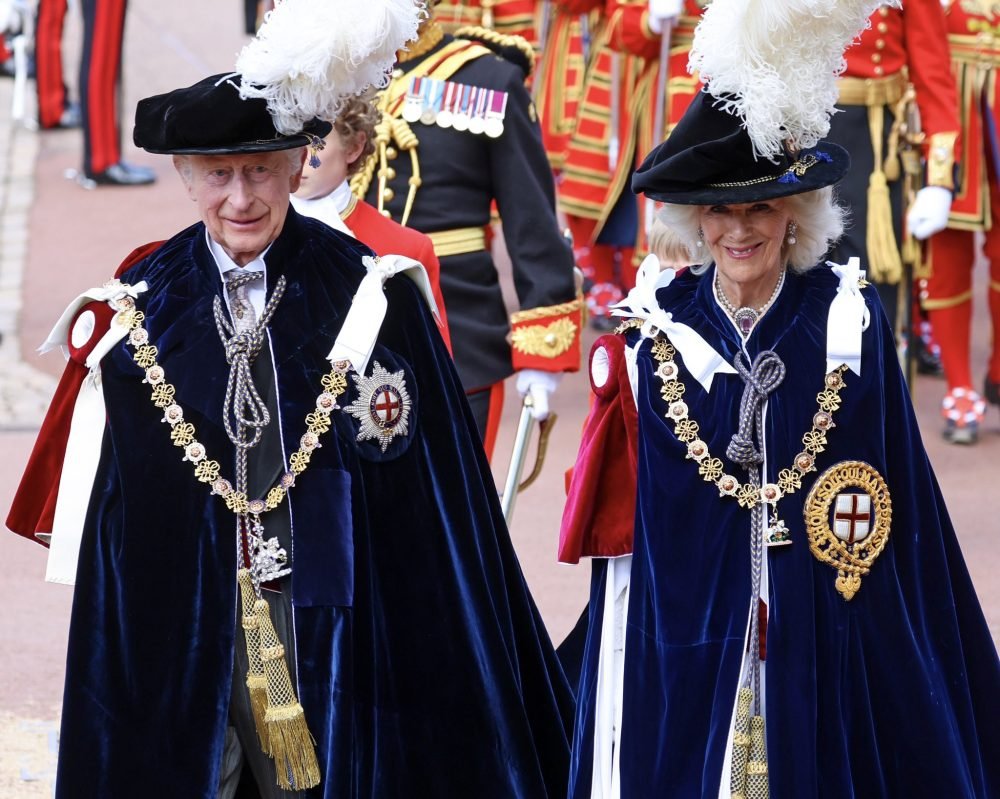
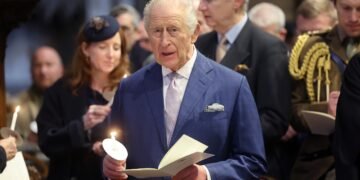
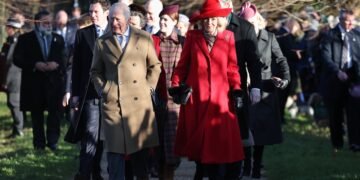
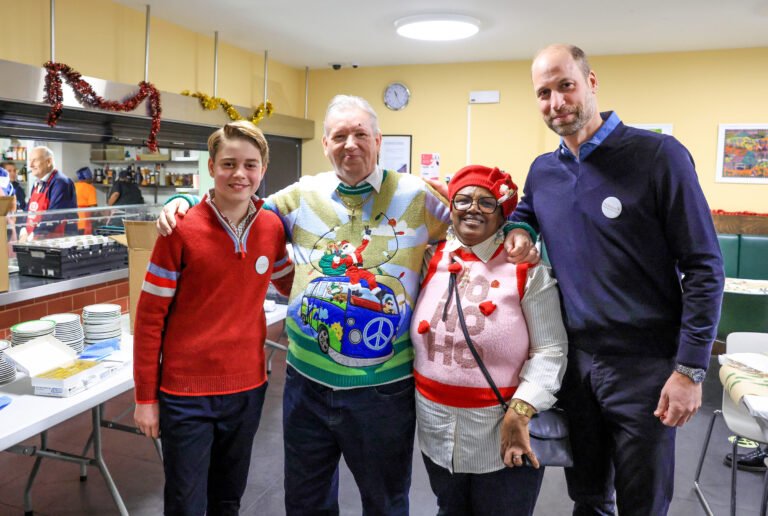

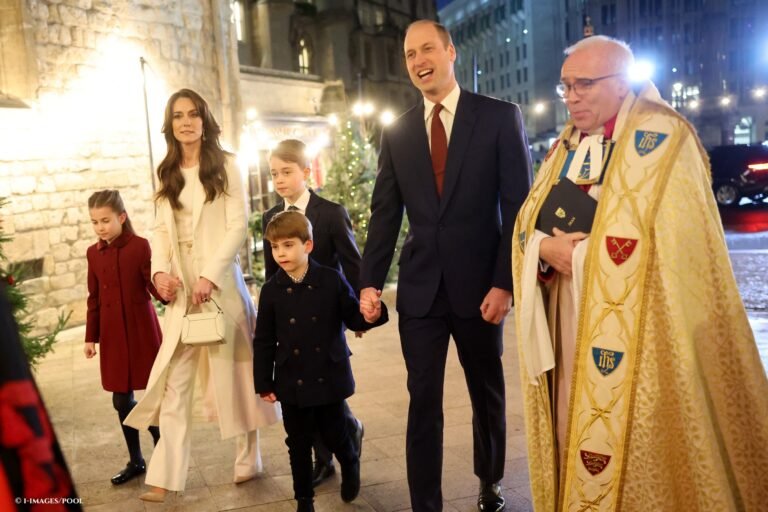
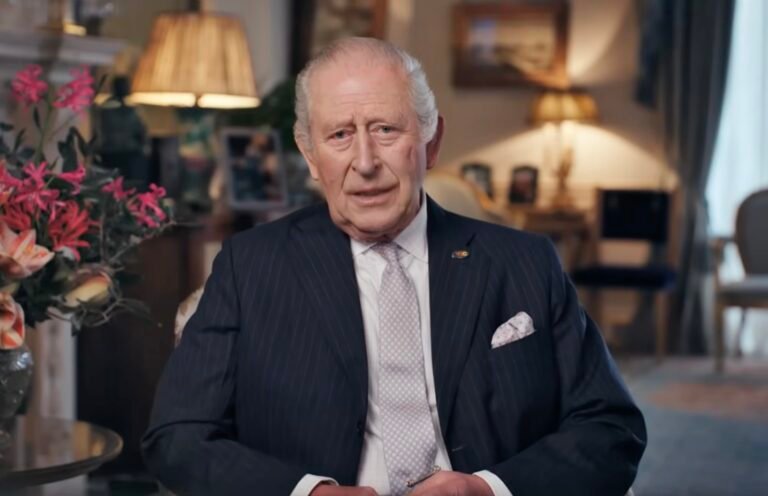
Very impressed
Excellent post !
I think The Duke of Sussex should be A Night of the Garder!
I would have more respect if the king sorted his family out and knock his sons heads together,diana would never have let this happen